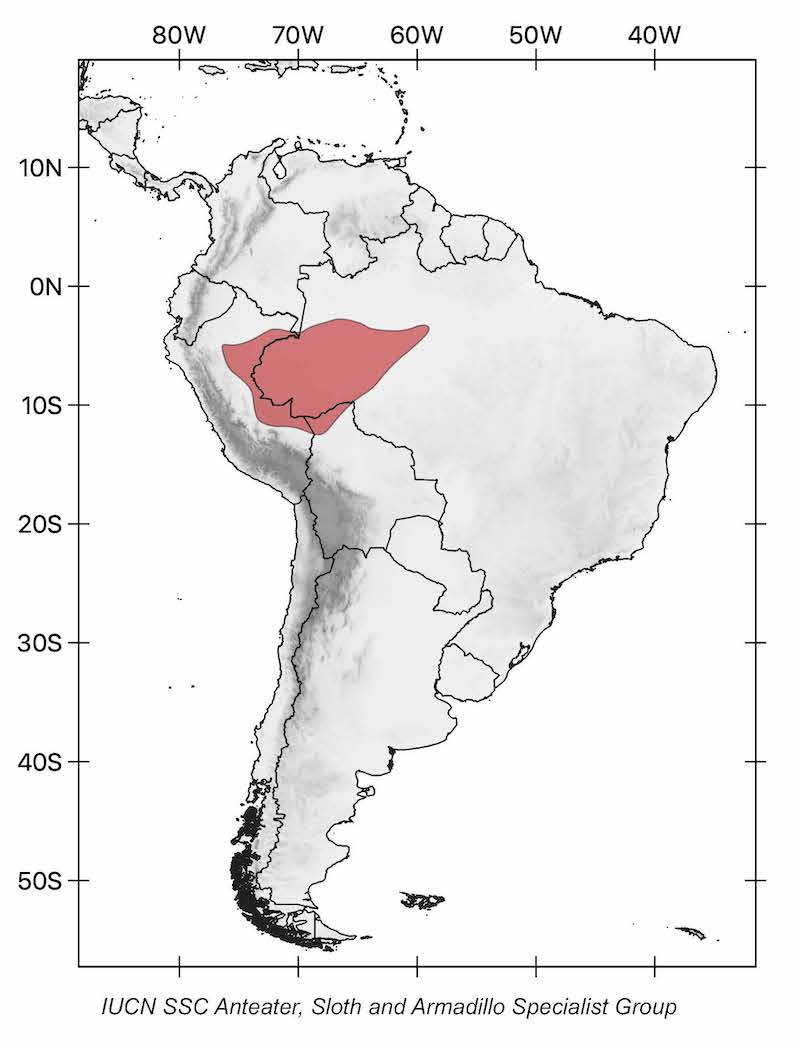Thomas’s silky anteater
(Cyclopes thomasi)
other common names
Thomas’s pygmy anteater
Taxonomy
Order: Pilosa
Family: Cyclopedidae


description
Until recently, it was thought that there was only a single species of silky anteaters. However, a 10-year long investigation by Miranda et al. (2018) provided evidence that there are actually seven species of Cyclopes.
No specific data are available on the size of Cyclopes thomasi, but assuming that it is similar in size to other silky anteaters, it would have a head-body length of around 20 cm, a tail of similar length, and it would weigh around 300 grams. The fur of its body is strikingly orange to reddish brown, while the legs and tail are grey. There is no dorsal stripe, and the ventral stripe is little developed and faint.

range
Cyclopes thomasi is distributed in western Brazil and east central Peru; it has been recorded in the western Amazon Basin, from Rio Juruá southwest to the Río Ucayali Region. Its eastern limits are unknown.

HaBITAT and ECOLOGy
No data are available on the habitat and ecology of this arboreal species.

curious facts
The scientific name of this species is a tribute to the great naturalist Michael Rogers Oldfield Thomas.

diet
No information is available on the diet of this species, but it is presumably an opportunistic insectivore that mainly feeds on ants.

reproduction
No information is available on the reproduction of Thomas’s silky anteater.

threats
The threats to this species are unknown. It is probably affected by habitat loss and its inappropriate use as a pet species, especially in rural areas.

Population trend

conservation status
The extinction risk of this species has not been assessed since the new taxonomic classification. Hence, it should be considered Not Evaluated.